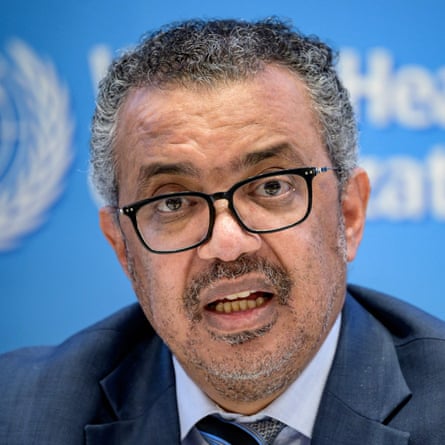Covid-19 caught the world unprepared; the scramble it prompted for treatments, tests, protective equipment and vaccines favoured the world’s richest nations. To avoid the same thing happening in future pandemics, a group of world leaders has proposed a pandemic treaty, which is being negotiated in a series of international meetings hosted by the World Health Organization (WHO).
The draft treaty is aimed at ensuring equity in distributing all that is needed to handle a future pandemic, instead of the coronavirus free-for-all.
However, reaching an agreement is tricky, with diverging government interests, reservations on the part of pharmaceutical companies and lingering anti-WHO sentiment from those who opposed lockdowns, masks and vaccines during the pandemic.
What is the pandemic treaty?
The WHO’s member states have agreed to work on a legally binding treaty on how to respond to the next pandemic to avoid repeating the damage caused by Covid-19, which not only caused almost 7 million deaths but, especially in poorer countries, led to increases in poverty and hunger, and disrupted health systems.
The negotiations are being hosted by the WHO, but it is up to member states to reach an agreement. The most recent meetings were held in July and are being followed up with more throughout this year, with the goal of presenting a final draft to the World Health Assembly in May 2024.
The WHO’s director general, Tedros Adhanom Ghebreyesus, has compared it to the convention on tobacco control, which came into effect in 2005 and was the first international treaty agreed under the WHO.
Why is it important?
Vaccines for Covid-19 were rapidly developed and rolled out to rich countries, but took far longer to reach developing countries in significant numbers.
While the Covax platform was established in the first year of the pandemic – to support the research and manufacture of a range of vaccine candidates and negotiate pricing to ensure their fair distribution – the world’s richest countries stockpiled vaccines through their own agreements.
The resource shortages were not just limited to vaccines, poorer countries struggled to obtain crucial supplies of oxygen for patients in intensive care, personal protective equipment, and testing resources.

What is being proposed?
The draft political declaration includes references to “global solidarity” and expressions of “concern” ranging from Covid-19’s disproportionate impact on low and middle-income countries and disadvantaged members of society to its impact on health systems and development.
More specifically, it calls for greater access to affordable medicine, including non-branded versions, and for greater support for local and regional production and distribution.
It also calls for the WHO to be given the authority and funding it needs to support countries to minimise the risks of a pandemic.
after newsletter promotion
What impact will it have?
The aim of the accord is to learn from Covid-19 and ensure that treatments, equipment and resources to deal with a pandemic are available to all countries on a fairer basis. It would also aim to help prevent future pandemics with improved and more transparent surveillance and early warning of disease outbreaks.
How is it progressing?
There have already been several rounds of talks ahead of a high-level meeting at the United Nations next month, which have produced a draft political declaration, but there are already questions about the strength of the deal.
Early drafts have been condemned as weak. Médecins Sans Frontières’ Access Campaign, which fights for fairer access to medical treatments, said the draft uses ambiguous language and that the criteria are too loose, so that when it comes to taking action, countries will interpret it differently and make it difficult to trigger the accord.
Even the definition of a pandemic is criticised for being too narrow: not just as an epidemic that has spread globally, but as one to “overwhelm health systems with severe morbidity and high mortality” and “causing social and economic disruptions”.
There have also been challenges from some opposed to the deal and critical of the WHO. Last month Tedros criticised claims by those with “vested interests” that the accord was a power grab by the WHO, which would “stymie innovation and research”.
He likened those undermining talks, “who peddle lies about this historic agreement”, to the tobacco industry’s attempts to thwart the control treaty 20 years ago. He has also had to rebut claims from people such as Elon Musk that the treaty means ceding sovereignty to the WHO.
Part of the call for better vaccine access involves increased production of non-branded treatments, but Tedros has said this does not mean the profits of large pharmaceuticals will be affected.
During talks last month, he said: “We don’t need to choose between equitable access and innovation. We do not have to choose between protecting public health and making a fair profit. We can strike a balance.”
